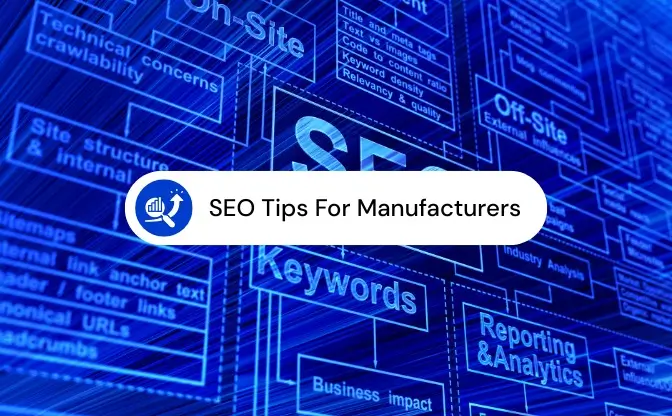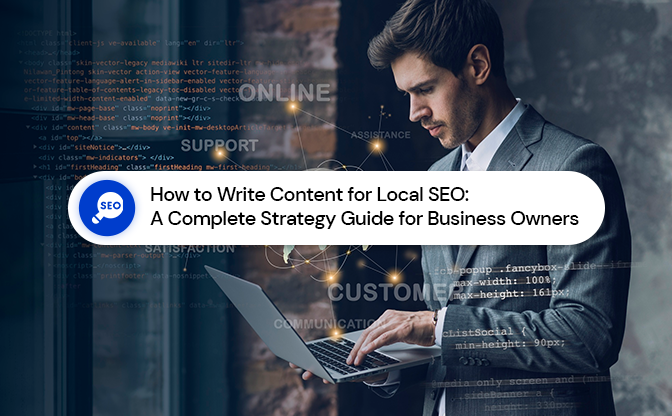Ultimate SEO Audit Checklist
Just like any other aspect of the business, making sure that your website runs smoothly and that it fulfills all the tasks that you require is important. This is where an SEO audit comes in. An SEO audit needs to be conducted regularly. If you are confused and want guidance on the checks that you need to carry out then you have come to the right place. We have curated the pertinent checks that you need to conduct and compiled the ultimate SEO audit checklist.
Quick Overview
- Technical Analysis ensures that your site is properly accessible and indexed.
- On-Page Analysis is divided into:
- General content focus (avoiding irrelevant or conflicting topics),
- Page-specific elements (titles, headings, meta descriptions, content quality and length, links, and user experience).
- Off-Page Analysis evaluates external signals: backlink quality, anchor text relevance, trustworthiness, and social reputation.
- Competitive Analysis & Keyword Research guides strategic keyword targeting based on difficulty and search volume.
| Category | Checklist Item | What to Evaluate / Notes |
|---|---|---|
| Analysis Types | Technical analysis | Confirm the site works properly and that pages are both accessible (to users and crawlers) and indexable (eligible to appear in search results). |
| Analysis Types | On-page analysis | Two angles: (1) General content issues — avoid publishing on conflicting, off-theme topics; (2) Individual page issues — how each page is written/structured, with quality content being central to rankings. |
| Analysis Types | Off-page analysis | Gauge external signals (popularity, who links to you, and trust). Keep clear of negative SEO practices to maintain trust with Google. |
| Analysis Types | Competitive analysis & keyword research | For each target keyword, weigh difficulty (how hard to rank) and traffic (search volume). Favor terms around medium difficulty and medium volume. |
| On-Page | Title tags | Titles should capture attention in SERPs and typically stay ~40–70 characters to display well. |
| On-Page | Keyword in H1 & H2 | Include the focused keyword in the H1 to clarify page context; add it in H2s to strengthen topical relevance. |
| On-Page | Keyword in meta description | Optimize for click-throughs with a concise description (aim ≤ ~160 characters) and include relevant keywords for user context. |
| On-Page | Content length | Prefer thorough, long-form content — not padded — enriched with explanations, specifics, and facts. |
| On-Page | Broken links | Find and fix 404s. Broken links hurt UX and can block crawlers, which may prevent indexing beyond the error page. |
| On-Page | Unique content | Ensure originality. Plagiarized/duplicated content can depress rankings; every page should add unique value. |
| On-Page | Valuable content | Content should genuinely help users. Helpful pages tend to earn more clicks/shares — signals aligned with better rankings. |
| On-Page | Users’ experience | Improve navigation, layout, color usage, and imagery. Poor UX pushes visitors away; a clear structure boosts engagement and conversions. |
| Off-Page | Link quality | Prioritize backlinks from reputable, high-authority domains; such links reinforce credibility and can lift rankings. |
| Off-Page | Reputation on social media | Backlinks and mentions from recognized sources help. Social engagement (likes, shares, comments) indicates popularity and trust. |
| Off-Page | Anchor text | Keep anchors relevant to the destination page; where appropriate, include targeted keywords to strengthen topical signals. |
| Off-Page | Trustworthiness of linking sites | Check the quality/security of referring domains (e.g., SSL). Backlinks are more useful when sources are dependable and verified. |
What Is A SEO Audit Checklist?
The SEO audit is the standard procedure for any website. It is conducted solely for marketing purposes. A well-conducted SEO audit serves the purpose of giving you a better insight into your website, webpages, and overall traffic. Additionally, it is an excellent way to improve the performance of your website and helps you rank better in the SERPs. Many things can be improved with an audit. For example, you can gain valuable insight into your competition, analyze keywords, enhance technical aspects, etc. That being said, you must never perform an audit just for the sake of conducting an audit. An SEO auditor needs to conduct the following analysis:
- Technical analysis: The technical analysis determines if your website is working properly. It helps with accessibility meaning Google’s and user’s ability to access the website. It also helps with indexability which refers to accessed pages being present within the search engine after being accessed.
- On-Page Analysis: On-page analysis can be conducted in two ways- general content issues and individual page issues. General content issues refer to issues that stop your content from making sense. It is typically bad to have numerous articles on conflicting topics that are not related to the main idea of your website. So it is ideal that you write about one general topic. Individual page issues are associated with how each page is written and structures since the general idea is that good content is the key to good rankings.
- Off-Page analysis: You can say that off-page ranking factors are a result of your work. They demonstrate the popularity of your website, if people are linking to it and through which websites, is your website trustworthy, etc. Here trust means that your website is trusted by the Google search engine. This will happen if your website steers clear of all negative SEO practices.
- Competitive analysis and keyword research: These two analyses are almost synonymous. This is because the keyword is the smallest measurement unit in SEO. Hence by analyzing the keywords, you are also analyzing your competition. You need to consider two things for every keyword- difficulty and traffic. Difficulty refers to how hard or easy is to rank and traffic refers to how many people search for that keyword. The ideal keyword is somewhere in the middle with medium difficulty and medium volume.
Why Do You Need a Checklist?
A routine checkup is required for the smooth functioning of everything and this is applicable to SEO too. In order to make sure your website ranking is secure, frequent SEO auditing should be a part of your actionable SEO strategy. The first step is to determine your website’s performance with SEO tools. You can then refer to an SEO audit checklist and refine your strategies. This SEO checklist is important because it will help you stay a few steps ahead of your competitors by identifying your the potential, strength and weakness of your website.
On-Page SEO Audit Checklist:
1. Title Tags:
While conducting an SEO audit, title tags are also considered. This is the first component in the SERP that catches the prompt attention of the clients. Aside from this, when it is about SEO results, the title length also matters. It must be somewhere close to 40 – 70 characters to optimize it.
2.Keyword in the H1 and H2:
The webpage is incomplete without a heading this is because the search engine looks through every page on the website and the headings of the page are also considered. Hence it is a good idea to add the focused keyword in the H1. This helps the search engine comprehend the context of the page whereas complicated keywords may confuse the search engine. In the H2, keywords should be added to build the relevancy of the topic.
3. Keyword in meta description:
Meta descriptions affect SEO indirectly. Optimization of the meta description aids in attracting more CTR and websites with high CTR is more likely to be noticed by search engines. The keywords in a meta description also help give users some context. It is best to not write long Meta descriptions and keep them limited to 160 characters.
4. Content-length:
It is ideal that the content that is featured on your webpage is long-form. This is because long-form content ranks better than short-form content. This does not mean that you lengthen your content by adding unnecessary extra words. It means that you must make your content better by adding rich information, proper explanations, descriptions, facts, etc. These qualities will help you increase the length of your blog and get a good ranking.
5. Broken links:
The purpose of SEO is to shape the website and make it better by removing the hampering elements. To receive a good rating, the website should be perfect in all of its elements. Hence it is necessary to check for the existence of broken links while SEO auditing. Broken links are not valuable to users as they generate the 404 error pages. The search engine crawlers are restricted by the broken link to crawl the website beyond that page. This leads to the website not getting indexed and consequently not being ranked.
6. Unique content:
Bad quality of content is a serious threat to your website’s ranking. Content is one of the most important features of a website that need optimization. While conducting an SEO audit, every aspect of the quality of the content is checked. For example, if the content is plagiarised as this can easily be detected by the search engine. This leads to your website getting bad rankings. Hence your content should always be original and unique.
7. Valuable content:
To be in demand for SEO, content should be valuable to the users. The value of the content on your website determines the ranking of your website. Hence if the purpose of serving the audience is justified, it will be rewarded by google search engine. This content also tends to earn more clicks and shares. These are the parameters that determine the ranking.
8. Users’ experience:
If your website is being clicked on but not explored it might be because of user experience. A bad experience with the website causes the users to ren away and hunt for better options. A bad experience may be due to many factors including complex navigation, design colours, layouts, images etc. Hence the best idea is to present a powerful and creative structure of the website elements. This will help you attract more traffic and conversions. This will lead to a higher ranking.
Off-Page SEO Audit Checklist:
1. Link quality:
Third-party referencing is a basic practice in SEO that helps with improving the rankings of a website. It isn’t just about the amount, truth be told, the quality of the links also matters. The quality of links is constantly observed by Google. What’s more, the sites enhanced with qualitative backlinks from the high-domain authoritative sites. As these are the trusted sites, links from such sites give the data to the web crawler that the site is significant and can be trusted. This ultimately leads to improved authority and credibility of the sites. Also, such sorts of sites are constantly targeted to rank higher.
2. The reputation of the website on social media:
Recommendations from a reputed site serve an important purpose in SEO. Along these lines, in the event that you are getting backlinks from a site ensure that they are from the reputed sites. Social presence likewise assumes a significant job in relation to backlinks. The number of likes, shares, and comment unmistakably shows you the genuine image of the site’s popularity and individuals’ engagement. Thus, links from such a site will be valuable in strengthening the SEO strategy and impacts. That is the reason it is an imperative segment of the SEO audit checklist.
3. Anchor text:
What sort of anchor text is lying on the link can make or break the value of links. We as a whole realize that connections have an incredible effect on the SEO results. Be that as it may, the optimization of the anchor text additionally has an effect on the value of SEO. The anchor text must be significant to the page it is diverting to, else it will negatively affect site rankings. Aside from this, attempt to get your targeted keyword shrouded in the anchor text of the link you are getting from the other site. This will reinforce your targeted keyword and help to rank your blog for the particular keyword. This is one of the practices used to upgrade the SEO results and therefore thought about while making the SEO review agenda.
4. The trustworthiness of a website:
The quality and security of the site that offers backlinks to you is a factor for rank improvement. Thus, it’s obligatory to check the sources of the backlinks or the sites from where the links are coming from. The backlines are only useful if the source sites are dependable, tenable, and verified with SSL. Adding another factor to the SEO audit checklist, the investigation of the backlink source site is additionally considered.
This concludes the comprehensive on-page and off-page SEO checklist. A routine SEO audit is necessary to achieve success in SEO as it does not come easily. A lot of hard work, time, and strategies are involved to receive a high ranking, and even then sustaining it takes effort. Hence an audit checklist allows you to investigate every element that could threaten your rankings. With the help of this checklist, you will be able to keep your SEO and website on track for success. You can get an expert and professional SEO company in Mumbai on-board to conduct regular audits and frame effective strategies for your business.


















